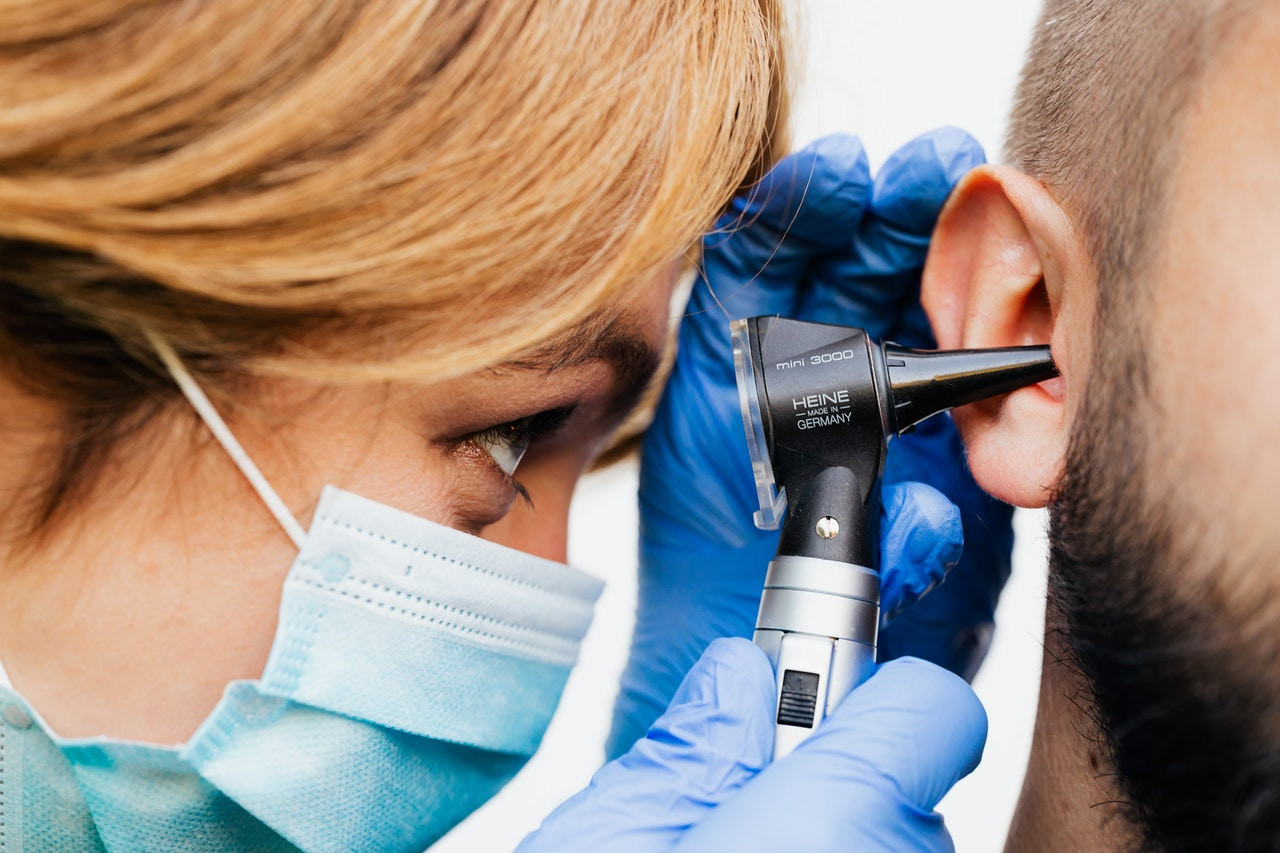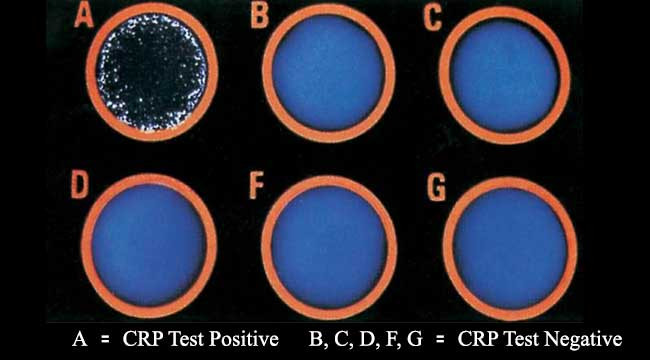Definisi
Otitis media supuratif akut merupakan infeksi yang ditandai dengan adanya nanah di telinga tengah. Kondisi ini merupakan bagian perjalanan penyakit dari otitis media akut, suatu peradangan yang terjadi dalam kurun waktu kurang dari 3 minggu pada telinga tengah, yang dapat disebabkan oleh bakteri atau virus. Infeksi ini menyebabkan munculnya cairan pada telinga tengah yang terinfeksi.
Telinga tengah berada di belakang gendang telinga dan juga merupakan tempat di mana tulang-tulang halus yang membantu pendengaran berada. Yang dimaksud dengan telinga tengah adalah ruang berisi udara di antara gendang telinga dan telinga bagian dalam.
Otitis media supuratif akut lebih sering terjadi pada anak-anak daripada orang dewasa, di mana sebagian besar kasus terjadi pada anak kecil yang berusia 6 hingga 24 bulan, dan frekuensi kasus berkurang setelah anak berusia 5 tahun. Sekitar 3 dari 4 anak memiliki setidaknya satu episode otitis media pada saat mereka berusia 3 tahun.
Penyebab
Penyebab dasar timbulnya otitis media supuratif akut adalah infeksi telinga yang disebabkan oleh bakteri dan virus. Bakteri penyebab infeksi ini yang paling umum adalah Haemophilus influenzae, Streptococcus pneumoniae, Moraxella catarrhalis dan Streptococcus pyogenes. Sedangkan virus penyebab yang paling umum adalah Respiratory Syncytial Virus (RSV) dan Rhinovirus.
Seringkali, infeksi telinga terjadi setelah seseorang mengalami flu/pilek atau infeksi saluran napas lainnya. Bakteri atau virus kemudian akan berjalan ke telinga tengah melalui tuba eustachius, suatu saluran bebentuk tabung yang menghubungkan telinga tengah dengan bagian belakang tenggorokan. Bakteri atau virus tersebut dapat menyebabkan tuba eustachius menjadi bengkak sehingga dapat menyebabkan saluran menjadi tersumbat dan membuat cairan yang diproduksi secara normal di telinga menjadi menumpuk di telinga tengah. Cairan yang terperangkap tersebut dapat terinfeksi oleh virus atau bakteri, sehingga menyebabkan timbulnya nanah dan rasa sakit.
Pada anak-anak, Tuba Eustachius berukuran lebih pendek dan cenderung lebih datar dibandingkan pada orang dewasa. Perbedaan fisik ini membuat saluran ini lebih mudah tersumbat dan cairan lebih sulit untuk mengalir pada anak-anak. Selain itu, beberapa hal yang dapat menyebabkan tuba eustachius menjadi bengkak atau tersumbat antara lain:
- Alergi
- Flu
- Infeksi pada sinus (ruang berongga di belakang hidung, pipi, dan dahi)
- Infeksi atau pembesaran kelenjar adenoid (suatu kelenjar di bagian belakang hidung dan tenggorokan)
- Paparan asap rokok
- Minum sambil berbaring (pada bayi)
Faktor Risiko
Faktor-faktor yang dapat meningkatkan risiko otitis media supuratif akut meliputi:
1. Usia
Bayi dan anak-anak yang berusia 6 bulan hingga 2 tahun lebih rentan terserang infeksi telinga. Hal ini dikarenakan ukuran dan bentuk tuba eustachius mereka yang lebih pendek dan lebih datar, serta karena sistem kekebalan tubuh mereka yang masih berkembang.
2. Riwayat keluarga
Kecenderungan terkena otitis media juga dapat diturunkan dalam keluarga. Selain itu, bila anak sedang menderita pilek atau infeksi saluran napas, hal ini juga dapat meningkatkan risiko mereka terinfeksi otitis media supuratif akut.
3. Memiliki riwayat alergi
Alergi dapat menyebabkan peradangan pada saluran hidung dan saluran pernapasan bagian atas, yang dapat membuat kelenjar gondok jadi membesar. Pembesaran kelenjar gondok dapat menyumbat tuba eustachius dan mencegah cairan telinga mengalir. Hal ini menyebabkan penumpukan cairan di telinga tengah sehingga menyebabkan tekanan ke area sekitar, nyeri dan kemungkinan terjadinya infeksi.
4. Menderita sumbing pada langit-langit mulut (cleft palate)
Perbedaan struktur tulang dan otot pada anak-anak yang memiliki celah di langit-langit mulut atau bibir sumbing, dapat membuat tuba eustachius lebih sulit untuk mengalirkan cairan telinga. Orang-orang yang memiliki penyakit kronis atau kondisi yang melemahkan sistem kekebalan tubuhnya, dapat mudah terserang infeksi.
5. Sering berada di tempat penitipan anak
Anak-anak yang sering dititipkan pada tempat penitipan anak atau kelompok bermain anak-anak lebih mungkin terkena pilek dan infeksi telinga daripada anak-anak yang tinggal di rumah.
6. Minum sambil berbaring
Bayi yang minum dari botol, terutama saat berbaring, cenderung lebih sering mengalami infeksi telinga daripada bayi yang diberi ASI.
7. Faktor musiman
Infeksi telinga paling sering terjadi selama musim gugur dan musim dingin. Orang dengan alergi musiman mungkin memiliki risiko infeksi telinga yang lebih besar ketika musim dingin. Paparan asap rokok atau polusi udara yang tinggi juga dapat meningkatkan risiko infeksi telinga.
Gejala
Bayi dan anak-anak mungkin memiliki satu atau lebih gejala berikut:
- Menangis
- Rewel
- Menarik-narik telinga
- Sakit telinga
- Sakit kepala
- Sakit leher
- Perasaan penuh di telinga
- Demam
- Muntah
- Diare
- Kurangnya keseimbangan
- Gangguan pendengaran
Diagnosis
Dalam mendiagnosis otitis media supuratif akut, dokter akan mulai dengan melakukan wawancara dengan orang tua atau pengasuh anak untuk menanyakan gejala-gejala yang dialami, serta riwayat infeksi telinga dan saluran napas sebelumnya. Kemudian dokter akan melakukan pemeriksaan fisik, khususnya pada telinga dengan menggunakan suatu alat yang bernama otoskop, yaitu suatu instrumen dengan kaca pembesar dan lampu untuk menilai keadaan dalam telinga.
Pada keadaan otitis media supuratif akut, gendang telinga akan tampak menonjol ke arah liang telinga luar karena terdapat cairan nanah di dalam telinga tengah. Dokter biasanya dapat mendiagnosis otitis media supuratif akut berdasarkan gejala yang dialami dan hasil dari pemeriksaan otoskop.
Terkadang, dokter juga dapat melakukan beberapa pemeriksaan tambahan untuk membantu diagnosis, seperti:
1. Otoskop pneumatik
Pemeriksaan ini memungkinkan dokter untuk melihat ke dalam telinga dan menilai apakah terdapat cairan di belakang gendang telinga. Dengan alat otoskop pneumatik, dokter akan dengan lembut menghembuskan udara ke gendang telinga. Pada telinga yang sehat, hembusan udara ini akan menyebabkan gendang telinga bergerak. Jika telinga tengah berisi cairan, gendang telinga tidak akan bergerak.
2. Timpanometri
Pemeriksaan ini untuk mengukur pergerakan gendang telinga. Alat ini akan menutupi liang telinga dan menyesuaikan tekanan udara di dalam telinga sehingga menyebabkan gendang telinga bergerak. Kemudian alat akan mengukur seberapa baik gendang telinga dapat bergerak dan secara tidak langsung memberikan ukuran tekanan di dalam telinga tengah.
3. Reflektometri akustik
Pemeriksaan ini bertujuan untuk mengukur seberapa banyak suara yang dipantulkan kembali dari gendang telinga, secara tidak langsung mengetahui apakah terdapat cairan di telinga tengah. Pada telinga yang sehat, gendang telinga akan menyerap sebagian besar suara. Namun, semakin banyak tekanan dari cairan yang ada di telinga tengah, maka semakin banyak suara yang akan dipantulkan oleh gendang telinga.
4. Timpanosentesis
Pada kasus tertentu dan sangat jarang, dokter mungkin menggunakan suatu tabung kecil untuk menembus gendang telinga dan mengalirkan cairan dari telinga tengah (prosedur ini disebut timpanosentesis). Cairan tersebut kemudian akan diuji untuk mengidentifikasi virus dan bakteri penyebab.
Tata Laksana
Beberapa langkah yang dapat Anda lakukan untuk mengurangi gejala di rumah, antara lain:
- Meletakkan kain lap yang hangat dan lembab di atas telinga yang terinfeksi
- Menggunakan obat tetes telinga yang dijual bebas untuk menghilangkan rasa sakit
- Mengonsumsi obat pereda nyeri yang dijual bebas seperti Ibuprofen atau Paracetamol
Dalam mengobati otitis media supuratif akut, dokter mungkin akan meresepkan obat tetes telinga untuk menghilangkan rasa sakit dan obat penghilang rasa sakit lainnya. Dokter Anda juga mungkin meresepkan antibiotik jika dicurigai disebabkan oleh infeksi suatu bakteri.
Selain obat-obatan, pada kondisi tertentu, dokter dapat menyarankan pilihan pembedahan, yaitu miringotomi. Prosedur ini dilakukan untuk membuat lubang pada gendang telinga yang tampak menonjol dan masih utuh. Miringotomi bertujuan untuk mengevakuasi nanah dan mencegah robeknya gendang telinga akibat desakan nanah yang terbentuk di dalam telinga tengah.
Komplikasi
Komplikasi yang dapat timbul sebagai akibat dari otitis media supuratif akut, yaitu:
- Gangguan pendengaran
- Perkembangan bicara dan bahasa yang tertunda (pada anak-anak)
- Penyebaran infeksi ke tempat lain
- Robeknya gendang telinga
Pencegahan
Anda dapat mengurangi kemungkinan anak Anda menderita otitis media supuratif akut dengan mencegah terjadinya infeksi telinga dengan melakukan hal berikut:
- Sering mencuci tangan dan mainan untuk mengurangi kemungkinan terkena pilek atau infeksi pernapasan lainnya
- Hindari asap rokok
- Dapatkan vaksin terhadap flu dan Pneumococcus
- Menyusui bayi secara langsung daripada menggunakan susu botol jika memungkinkan
- Hindari memberi bayi anda dot
Kapan Harus ke Dokter?
Gejala dan tanda otitis media supuratif akut dapat bervariasi antar anak dan terkadang tidak terlalu jelas, sehingga sangat penting untuk mendapatkan diagnosis yang akurat dan pengobatan yang cepat. Konsultasikan ke dokter jika mengalami:
- Gejala berlangsung lebih dari sehari
- Keluhan dirasakan anak yang berusia kurang dari 6 bulan
- Sakit telinga hebat
- Bayi atau balita Anda sulit tidur atau mudah rewel setelah mengalami pilek atau infeksi saluran pernapasan atas lainnya
- Anda mengamati keluarnya cairan, nanah atau cairan berdarah dari telinga
Bila Anda masih ingin tahu lebih lanjut mengenai penyakit-penyakit lainnya, Anda bisa mengeceknya di sini ya!
- dr Hanifa Rahma
Danishyar, A., et al. Acute Otitis Media. (2022). Retrieved 12 Maret 2022, from https://www.ncbi.nlm.nih.gov/books/NBK470332/
Donaldson, JD., et al. Acute Otitis Media. (2021). Retrieved 12 Maret 2022, from https://emedicine.medscape.com/article/859316-overview
Ear Infection (Middle Ear). (2019). Retrieved 12 Maret 2022, from https://www.mayoclinic.org/diseases-conditions/ear-infections/symptoms-causes/syc-20351616
Ear Infection (Otitis Media). (2019). Retrieved 12 Maret 2022, from https://my.clevelandclinic.org/health/diseases/8613-ear-infection-otitis-media
Kivi, R. Acute Otitis Media: Causes, Symptoms, and Diagnosis. (2019). Retrieved 12 Maret 2022, from https://www.healthline.com/health/ear-infection-acute
Knott, L. Acute Otitis Media in Children. (2021). Retrieved 12 Maret 2022, from https://patient.info/doctor/acute-otitis-media-in-children
Limb, CJ., et al. Acute Otitis Media in Adults. (2021). Retrieved 12 Maret 2022, from https://www.uptodate.com/contents/acute-otitis-media-in-adults












